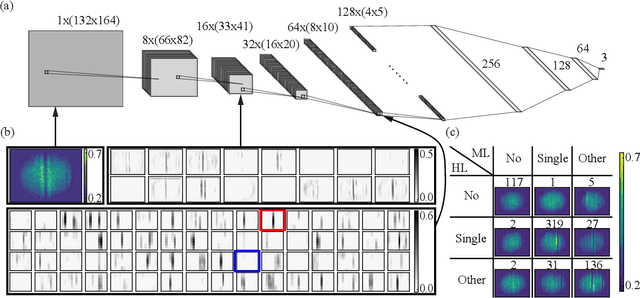Shangjie Guo
Dark Solitons in Bose-Einstein Condensates: A Dataset for Many-body Physics Research
May 17, 2022



Abstract:We establish a dataset of over $1.6\times10^4$ experimental images of Bose-Einstein condensates containing solitonic excitations to enable machine learning (ML) for many-body physics research. About 33 % of this dataset has manually assigned and carefully curated labels. The remainder is automatically labeled using SolDet -- an implementation of a physics-informed ML data analysis framework -- consisting of a convolutional-neural-network-based classifier and object detector as well as a statistically motivated physics-informed classifier and a quality metric. This technical note constitutes the definitive reference of the dataset, providing an opportunity for the data science community to develop more sophisticated analysis tools, to further understand nonlinear many-body physics, and even advance cold atom experiments.
Combining Machine Learning with Physics: A Framework for Tracking and Sorting Multiple Dark Solitons
Nov 08, 2021



Abstract:In ultracold atom experiments, data often comes in the form of images which suffer information loss inherent in the techniques used to prepare and measure the system. This is particularly problematic when the processes of interest are complicated, such as interactions among excitations in Bose-Einstein condensates (BECs). In this paper, we describe a framework combining machine learning (ML) models with physics-based traditional analyses to identify and track multiple solitonic excitations in images of BECs. We use an ML-based object detector to locate the solitonic excitations and develop a physics-informed classifier to sort solitonic excitations into physically motivated sub-categories. Lastly, we introduce a quality metric quantifying the likelihood that a specific feature is a kink soliton. Our trained implementation of this framework -- SolDet -- is publicly available as an open-source python package. SolDet is broadly applicable to feature identification in cold atom images when trained on a suitable user-provided dataset.
Machine-learning enhanced dark soliton detection in Bose-Einstein condensates
Jan 14, 2021



Abstract:Most data in cold-atom experiments comes from images, the analysis of which is limited by our preconceptions of the patterns that could be present in the data. We focus on the well-defined case of detecting dark solitons -- appearing as local density depletions in a BEC -- using a methodology that is extensible to the general task of pattern recognition in images of cold atoms. Studying soliton dynamics over a wide range of parameters requires the analysis of large datasets, making the existing human-inspection-based methodology a significant bottleneck. Here we describe an automated classification and positioning system for identifying localized excitations in atomic Bose-Einstein condensates (BECs) utilizing deep convolutional neural networks to eliminate the need for human image examination. Furthermore, we openly publish our labeled dataset of dark solitons, the first of its kind, for further machine learning research.
 Add to Chrome
Add to Chrome Add to Firefox
Add to Firefox Add to Edge
Add to Edge